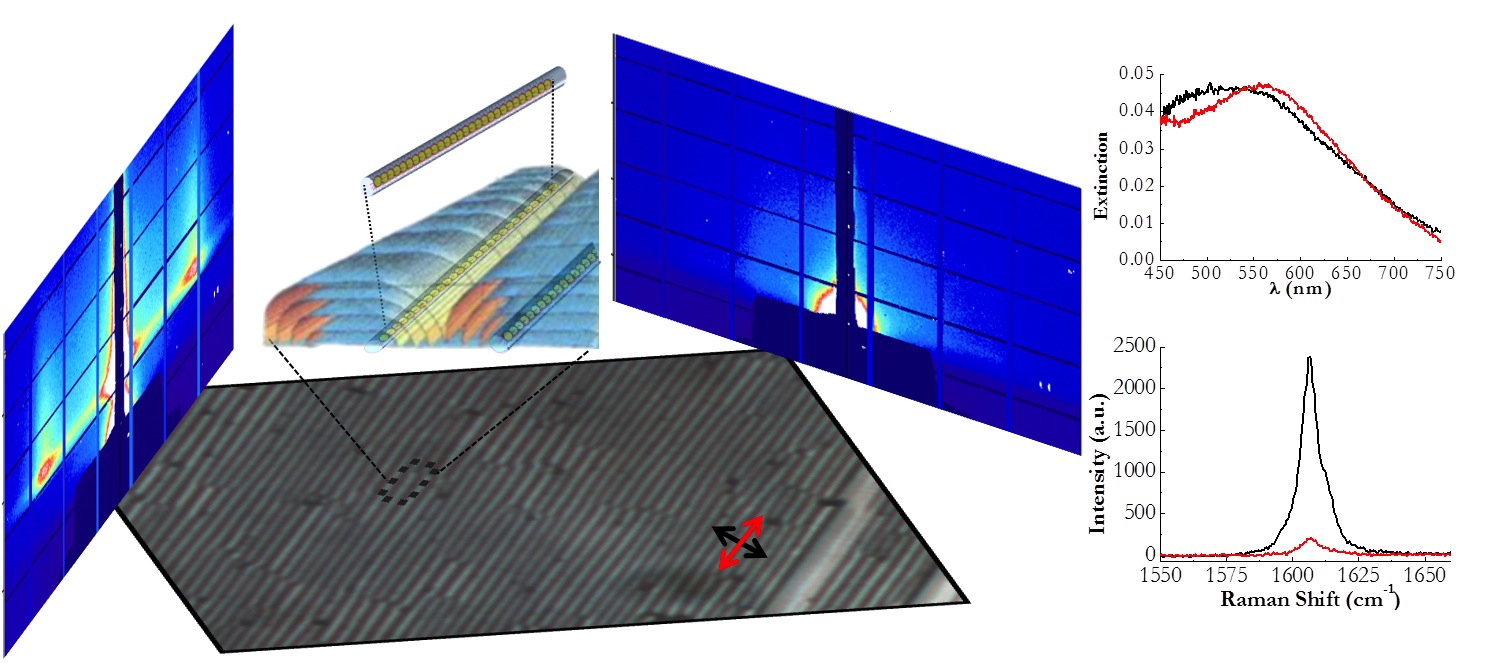Directed assembly of nanoparticles is a promising alternative for original nanoparticle organisations. New kinds of optical properties are expected when semi-conductive or metallic nanoparticles are concerned.
Using liquid crystal matrices oriented by their interfaces, we create ordered arrays of topological defects [1] that act as traps for nanoparticles, allowing for an anisotropic directed assembly.
For trapped fluorescent nanorods, a fine control of the polarization of the single photons is obtained [2].
Similarly the orientation of gold nanorods leads to the control of their luminescence as well as of their plasmon resonance by light polarization [3].
Dr. Emmanuelle Lacaze will show that, when the nanoparticle concentration is increased, single chains are formed, and can lead to a strong electromagnetic coupling between the particles [3, 4]. « We are not only capable of linearly confining the particles, but also of varying the inter-particle interactions and thus modify their optical properties which are sensitive to the inter-particle distance [4]. The chains being oriented by the defects, the electromagnetic coupling becomes controlled by light polarization [3-5]. We now also show how to use the easy activation of the liquid crystal matrix to modify on purpose these nanoparticle organizations. »
[1] D. Coursault et al., Soft Matter 12 (2016) 629.
[2] L. Pelliser et al, Adv. Funct. Mat. 25 (2015) 1719.
[3] B. Rozic et al., ACSNano (2017).
[4] D. Coursault et al., Adv. Mat. 24 (2012) 1461.
[5] D. Coursault et al., ACSNano 9 (2015) 11678.
